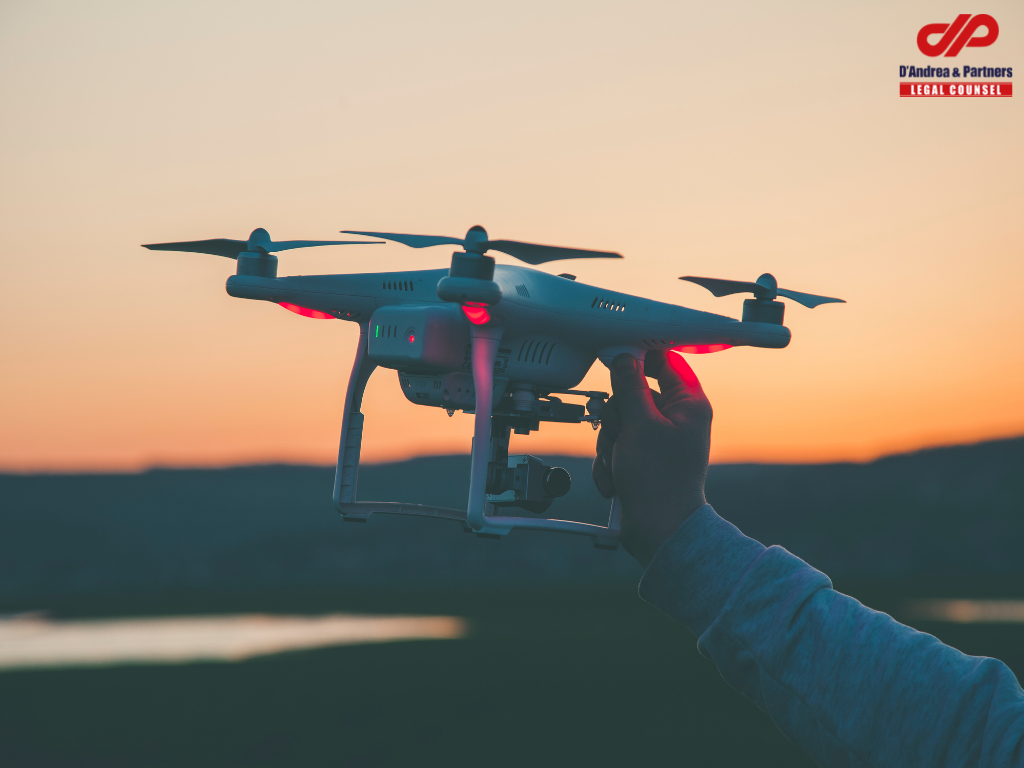INTRODUCTION
In recent years, the commercial market for Unmanned Aircraft Systems (“Drones/UAS”) has witnessed a substantial growth in India. This Indian market is expected to become a $900 million dollar industry by the end of 2021, accounting for approximately 4% of the $21.50 billion global drone market. Notably, India currently accounts for 20% of the global imports of drones making it the fifth-largest importer of drones in the world. The drone market is predicted to grow at an annual rate of 12.6% during the 2020-2026 period in India.
This surge in demand and supply of drones in the world’s sixth largest economy can be attributed to the significant augmentation in the technological sector, development in the field of artificial intelligence, increasing awareness and growing adoption of these drones in myriads of different areas such as mining, city planning, filming and photography, gas and refining, and agriculture. The state sponsored initiatives such as ‘Make in India’ have further propelled the domestic manufacturing of drones and provided an impetus to the growth of the commercial drone market of India.
UNMANNED AIRCRAFT SYSTEM RULES OF INDIA, 2021
A relevant factor which has paved the way for the development of the commercial drone market in India is the regulatory regime governing the authorization and operation of drones. Pertinently, since 2014, the Government of India had imposed a strict ban on the use of drones. Subsequently, in 2018, the Government of India released guidelines for drone usage (“Earlier Guidelines”) with the objective of permitting the commercial use of drones in a variety of fields which provided necessary stimulus to the dormant commercial drone market of India.
In order to address the lacunas of the previous regulations and accentuate the growth of the commercial drone market, the Government of India notified the Unmanned Aircraft System Rules, 2021 (“UAS Rules”). While the Earlier Guidelines had limited applicability, which extended only to the territory of India, the UAS Rules are applicable to all drones which are registered in India but may operate outside the Indian territory. Although the classification of drones remains relatively unchanged, a significant change in the form of the regulation of Nano drones (with limited exemptions) has been introduced in the UAS Rules which were earlier exempted from regulatory compliance. Notably, manufacturers of Nano drones would now have to equip the system with geo-fencing capabilities to restrict the operations within the stipulated speed, height and range thresholds to guarantee their non-categorisation as Micro drones (which require additional compliances).
The UAS Rules now require all persons associated with the drone ecosystem to undertake a registration process and not merely the operator, manufacturer and importers of drones. A new compliance in the form of a ‘Certificate of Manufacture and Airworthiness’ is necessitated to be obtained from the UAS manufacturer to certify the class and type of the drone in order to ensure compliance with the thresholds under the UAS Rules. However, the UAS Rules have imposed an embargo on the use, operation and transfer of a drone in India unless it has been registered with the regulatory authority.
The UAS Rules have envisaged the novel concept of licensed drone ports which can be used for the arrival, departure and maintenance of drones. To regulate this ecosystem of drones, the Government of India has been granted the power to establish an Unmanned Aircraft Traffic Management System (“UTM System”) for efficient drone operations. Finally, deviating from the trend of broad penal provisions as provided by the Earlier Guidelines, the UAS Rules have stipulated a detailed schedule of penalties based on the type of non-compliance in order to eliminate any enforcement related ambiguities.
CONCLUSION
Even though stakeholders of the drone industry were apprehensive of the impact of the Covid-19 pandemic on India, the extensive use of drones in driving Covid-19 relief efforts at the ground level has facilitated a significant increase in the demand and growth of the industry. Recently, the Government of India authorized the Indian Council of Medical Research to explore the possibility of delivering Covid-19 vaccines through drones. Drones have established their potential to bring down the cost of compliance and ensure not merely reliable data but a successful alternative vehicle for transportation and mobility to remote places.
However, the commercial drone industry has been fairly critical of the regulations imposed by the Government of India which make the usage of drones extremely bureaucratic and economically unviable. The compliance thresholds are quite high with lengthy timelines for authorization and approval, and the infrastructure is far from drone-friendly. Foreign entities even with their wholly-owned Indian subsidiaries have been barred from registering and using drones in India which has been starkly disappointing for the international drone industry. Therefore, a more liberalized and less stringent drone policy with strict timelines would go a long way in embracing and giving a boost to the commercial drone sector of India.
The professionals of D’Andrea and Partners Legal Counsel are continually monitoring trends in the Indian market. If you have any questions, do get in touch at info@dandreapartners.com.




